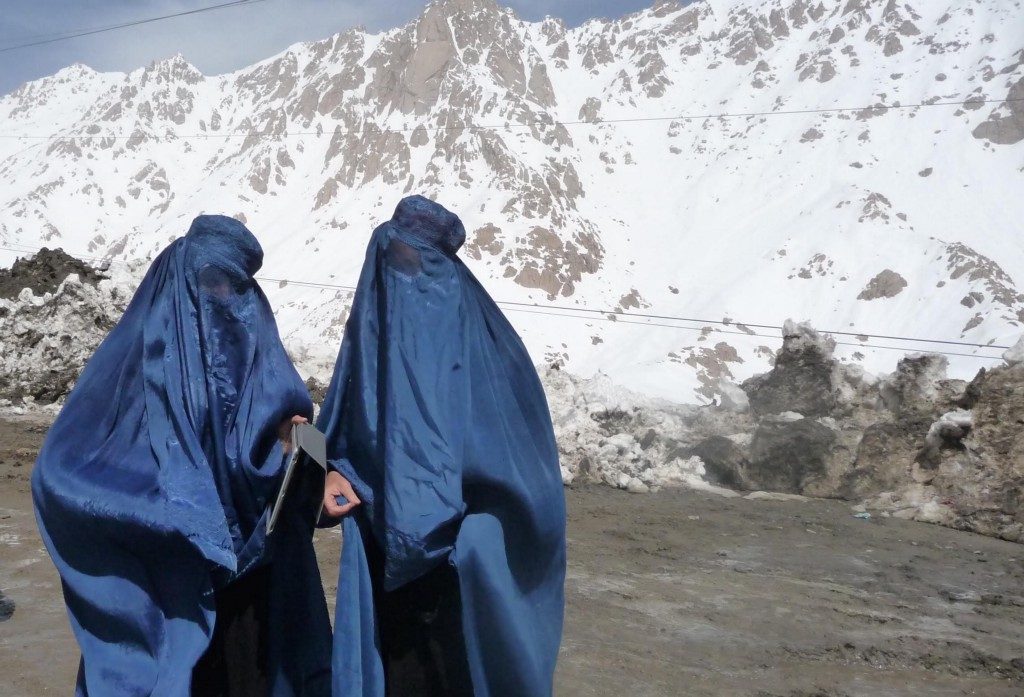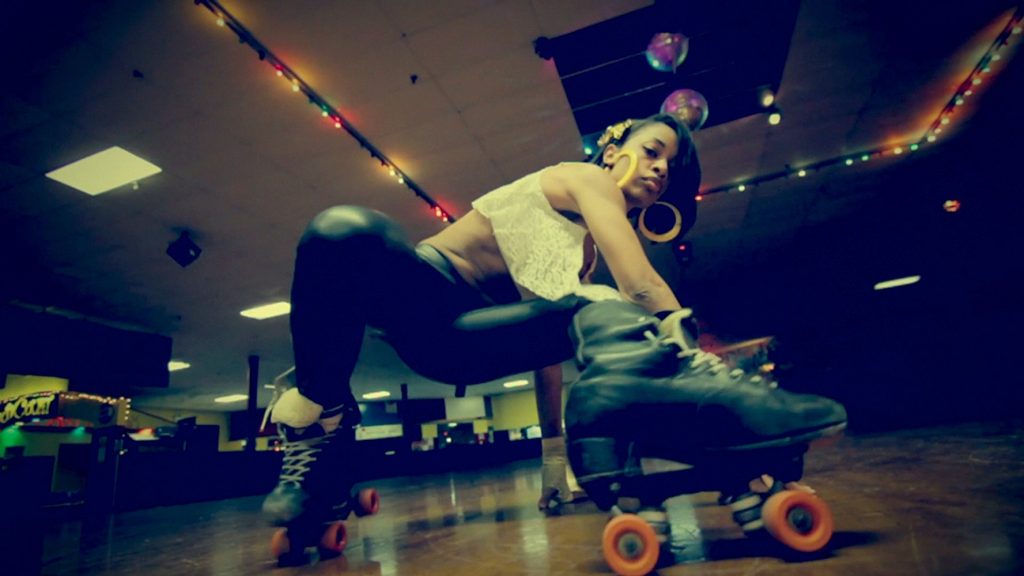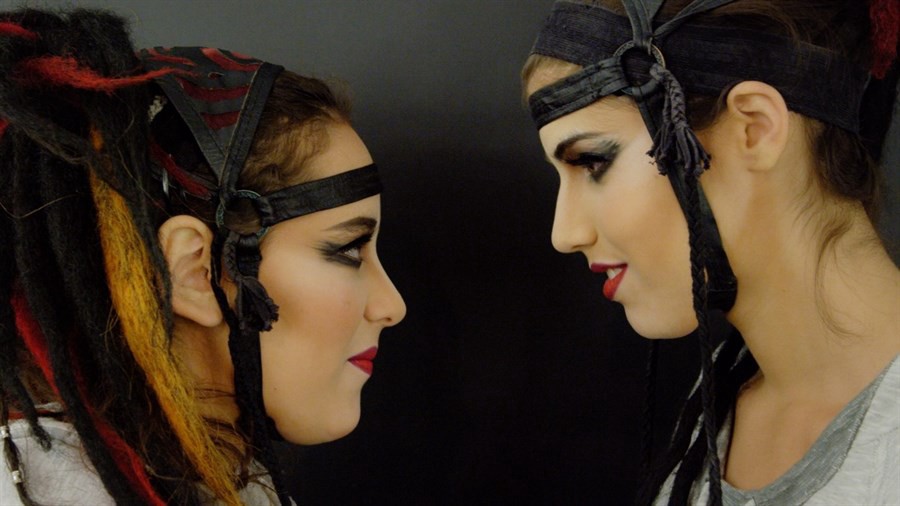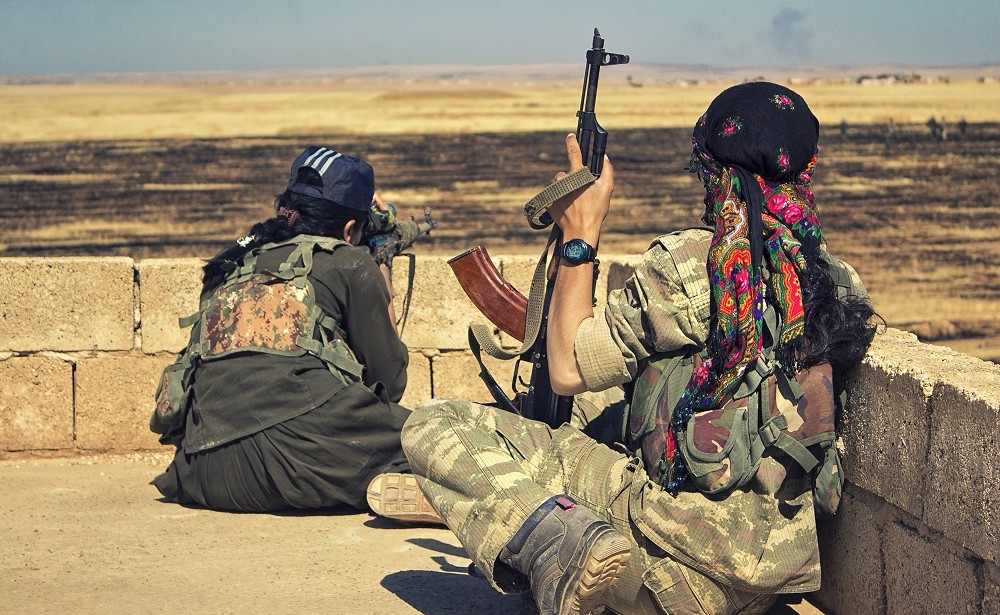Pietra Brettkelly is a multi-award-winning director and producer. Her 2008 film “The Art Star and the Sudanese Twins” won the World Cinema Documentary Editing Award at the Sundance Film Festival and screened at over 100 film festivals. Her awards include the New Zealand Film Commission Producer’s Award, Qantas Film and Television Best Documentary Director, Best Director at the EBS International Documentary Festival (EIDF) in Seoul, Korea, Best Documentary at the Whistler Film Festival, Canada, and Special Jury Prize at the Zurich Film Festival. (Press materials)
“A Flickering Truth” will premiere at the 2015 Venice International Film Festival on September 5.
W&H: Please give us your description of the film playing.
PB: As Afghanistan teeters on an unpredictable future, “A Flickering Truth” unwraps the world of three dreamers and 8000 hours of film covered by the dust of 100 years of war. Can these men who risked their lives to protect this vessel of culture restore the record of Afghanistan’s colorful and diverse past? And what surprises will emerge from the cloak of time?
W&H: What drew you to this story?
PB: I had spent time in Afghanistan in 2006 directing another film, but found when I left I wanted to come back. I was fascinated by this country. As a filmmaker coming from one of the youngest lands in the world, New Zealand — safe, green and democratic — I was intrigued by Afghanistan, with its literature and poetry, its old land and its deep history.
It was a hot day in the summer of Kabul 2012, more than three years ago. I wondered what had happened to Afghan filmmakers — people like me — during these decades of conflict. There was talk of a slightly mythical place where the films of Afghanistan were stored, but no one really knew what was there.
Attempts were made to dissuade me. Afghanistan is one of the most corrupt places in the world, and I was warned that the financial greasing of palms might be expected before I got access, and then who knew what was inside those sheds. I decided to investigate.
I’d been mentoring a young filmmaker couple in Afghanistan for a few years and persuaded one of them to come with me. We walked miles through the dusty streets of Kabul, and were stopped often by security police to check my passport and his credentials. American forces’ helicopters hovered overhead, and there seemed to be more soldiers on the ground. I felt a lot of tension. I wondered if a suicide bomb had gone off that morning.
The Afghan Film archives are in what is said to be one of the most heavily guarded roads in the world — sandwiched between embassies and theisafInternational Security Assistance Force (ISAF) compound. Police kept telling us we couldn’t go into this high-security area, but I persevered and pushed through, sweating under my heavy layers of clothing, only my face showing. Eventually, we made it to the front gates of the Afghan Film archive. We were turned away by the gun-totting security guards, but I pulled out the line, “I’ve come all the way from New Zealand to see your films.” One person deferred to another and then another.
Finally, an employee came out and said, “Okay, come and meet our new director.” Ibrahim Arify had just returned to Afghanistan, brought back from his life in Europe, going in the reverse of the Afghanistan diaspora, employed to transform the archive and save the films.
I think he was slightly incredulous by this New Zealand woman in front of him. But with the generosity that I would continue to experience over the following years, he said to me, “Let’s discover the films together.”
W&H: What was the biggest challenge in making the film?
PB: It might sound crazy, but filming in a conflict zone, in Afghanistan, and being a female filmmaker was the easy part. I found people open and understanding of the importance and beauty of filmic storytelling. I never had to explain why Jake Bryant, my Director of Photography, and I were climbing up a ladder to get a high shot, or running ahead to get an arrival shot, or filming weeks after weeks, months after months, collecting so much material. The process was respected and honored.
The length of production — three-and-a-half years — did mean I struggled with continuity of editor. I had 10 editors across the film, which was some sort of torture I never want to replicate. But they were all wonderful, bringing something of themselves to the process. Thankfully, I was invited to the Sundance Institute Edit and Story Lab, where 10 days of tears and brainstorming and thrashing out that current cut helped the film’s direction, working with an extraordinary Danish editor, Jacob Schulsinger. I then finecut the film with French editor Nicolas Chaudeurge, whose work in drama meant he brought a clarity and dramatic approach to story structure.
It’s a privilege to have the career I have, to love every day and be following my passion, the stories that interest me, to remote locations and people. So nothing stops me from that — but yes, it seems redundant in documentary-filmmaker circles today to say the biggest struggle was financing.
And what follows is a common story — I had to take another mortgage out on my home, I’ve put my own money into the film’s production, I had to sell my soul making “propaganda” TV in Qatar for a few months to fund the filming.
[Another challenge I encountered while filming were issues with safety.]
I have previously filmed in Libya interviewing Colonel Gadaffi, South Sudan after the longest running civil war in African history, the Amazon during anti-logging protest times. I don’t go into conflict zones, without knowing we will sometimes be in danger — some instances that we know of and can prepare for. But Afghanistan is an unpredictable place.
And yes, at times I did feel a sense of danger.
Jake and I have always maintained a few rules that have so far worked for us — we avoid staying in hotels or official accommodation, seeing these as possible targets, instead preferring to rent rooms in people’s homes; we avoid employing security — we feel it brings attention to us; we travel just the two of us and a translator when needed, small, able to react and move quickly; and we never do the same thing day after day — routine makes it easier for kidnappers to plot their moves.
But what I learned during the making of “A Flickering Truth” was that I’m not afraid of dying — I’m afraid of the pain it might inflict on my family and friends. At one stage our car had broken down in Taliban country, and we were stuck for hours. Our driver told me to put on my burqa and stay in the car. Jake [, who as I previously mentioned, is the film’s director of photography,] was dressed like a local, so he didn’t stand out. If it had become known that there were foreigners in the car, it might have been a different outcome.
Another occasion when I had edited the film to near completion, I returned to Kabul to show everyone at the Archive the film, so they could understand what I’d been doing the past two-and-a-half years.
One night, I was back at the house I was staying in, and there was a loud explosion. The house shook, and then a brief silence all around, like everyone and everything was holding its breath. One of my flatmates was running through the house turning off all the lights. He said I should come downstairs for safety. And then the fighting began and continued around our neighborhood for the next five hours.
We followed it on Twitter as journalists were gathering information. After an hour, I decided to return to my room, put my passport in my back pocket along with a wad of cash. I emailed Jake , who was back in New Zealand, about what was happening and my escape plan if anything was to happen. I knew he would understand and wouldn’t be alarmed by my email.
And then I lay in bed fully clothed, ready to run, with my head torch on reading my childhood friend Helena Wisniewska-Brow’s book “Give Us This Day.” Somehow the stories of home calmed me and made me feel connected to another place.
Making sure the subjects felt safe and protecting the Afghan Film archives was also a concern.
Throughout the process of filming, I would ask if anyone felt us filming them or them being with us made them question their security. It was an open discussion that they knew they could have with me at any time.
And a few times, I did change what I’d intended to film — the gardener Mahmoud said it would be unwise for us to come into his neighborhood to film him returning from work, to his family — for our own safety being relatively rich foreigners. It would also have brought attention to him and his family; others might assume meant he had money from us.
Another instance: When the team planning the mobile cinema trip, it was decided it was unwise for me as a woman to go with them into a certain district, though Jake would be okay dressed more like a local, and using a much smaller camera (he used a Black Magic).
A third instance was in the grounds of the Afghan Films archive itself. During a deployment, ISAF helicopters were going back and forth over our heads. We could see soldiers out the sides of the helicopters with their guns poised. I wanted a close-up of one of those soldiers. But when Jake put on a lens to capture that moment, some of the employees felt the long lens would look like a gun, pointed back at the soldier and might lead to gunfire. Rather than stopping us from getting the shot, they asked that Jake step under the eave of the building so he might not be seen. They were always respectful that we were making important decisions for the film.
W&H: What do you want people to think about when they are leaving the theater?
PB: In the Afghan people, I found the most resilient, welcoming people who, for the first time in my career, never judged me over my right to tell this story — as a woman or a foreigner. I hope audiences see the openness and trust that was gifted to me and the power of the story we were able to tell — one of a people just like us, but caught in decades of conflict. A people who cherish their culture and history and the films that have captured that culture.
W&H: What advice do you have for other female directors?
PB: Don’t try and mimic men — how they operate, how they do business, how they direct, write or are creative. They are not perfect. Women do it all differently, and that should be celebrated. We believe in collaboration, we are empathetic and sympathetic and we do tend to connect to stories and people on a different level. And this should all be celebrated.
And don’t ever be afraid of your tears — I cry often and don’t mind then shouting through my tears. Surely the most wonderful work is made by those who are passionate and emotional. So here I am.
W&H: Name your favorite woman-directed film and why.
PB: Oh no, I’m losing myself in my memories and tempting my procrastination levels by thinking about re-watching some of the wonderful works of female directors through the ages, when I need to be focusing on my film that is to have its world premiere in a matter of days! I will always bow to the work of my fellow New Zealander Jane Campion, though, who is surprising, challenging and gracious.







